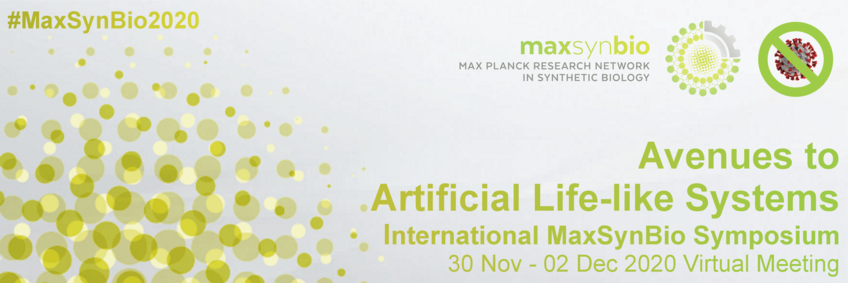
#11 - Understanding and engineering bio membranes for fun and reconstitution of cellular functions
Jan Steinkühler (Northwestern University, Evanston)
Monday, 30 Nov 21:15 - 22:00 CET
Access to the BigBlueButton rooom for this Mini Talk via the lists for Monday and Tuesday.
Please make yourself familiar with BigBlueButton before you join the Mini Talk - read the instructions.
Abstract
Title: Understanding and engineering bio membranes for fun and reconstitution of cellular functions
Author(s): Jan Steinkühlera
Affiliation(s): aNorthwestern University, Chicago
Abstract: Bio membranes are ubiquitous players in cellular life and essential functions like migration or division require dynamic membrane remodeling. However, it often remains unclear to which extent membranes are only passively deformed or are integral driver of the cellular machinery. I will discuss a recent experimental result, in which a limited set of lipids and purified protein were used to reconstitute rather complex cellular functions. By control over vesicle area to volume ratio and asymmetric protein adsorption to the membrane, vesicles were shaped into dumbbell morphologies that act as a simple model of a dividing cell. We describe the emergence of a constriction force that enhances spontaneous fission and complete division of the two newly formed compartments. Because of the generic nature of the used protein-membrane interactions, this system could be easily extended to more complex stimuli. In a second study we show that by preserving PM structure and composition during isolation from cells, vesicles with cell-like elasticity are obtained. We found that these plasma membrane vesicles store significant area in the form of nanotubes in their lumen. These are recruited by mechanical tension applied to the outer vesicle membrane showing an apparent elastic response. This “super-elastic” response emerges from the interplay of lipid liquid-liquid phase separation and membrane asymmetry. This finding allows for bottom-up engineering of synthetic vesicles that appear over one magnitude softer and with three fold larger deformability than conventional lipid vesicles.